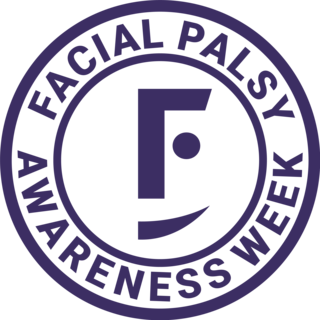Psychology
Look Beyond Face Value: The Psychology of Facial Paralysis
During Facial Palsy Awareness Week, learn about expressive diversity.
Posted March 1, 2021 Reviewed by Ekua Hagan

Facial expression may get a lot of attention, but to understand the full range of human communication, we have to look beyond the face. Facial Palsy Awareness Week is March 1-7. Learn about facial palsy or paralysis this week, and consider the diverse ways that people express themselves.
Facial expression plays an important role in how we communicate and form impressions of the people around us. In “The Expression of Emotion in Man and Animals,” Charles Darwin proposed that facial expressions evolved to quickly communicate emotional states important to social survival. He hypothesized that certain facial expressions are innate, and therefore universally expressed and recognized across all cultures.
In 1971, psychology researchers Paul Ekman and Wallace Friesen tested Darwin’s hypothesis. They enlisted members of the Fore tribe in Papua New Guinea, who at the time had little contact with Western culture, to do an emotion recognition task. An interpreter read stories about emotional events to members of the tribe, such as “her child has died, and she feels very sad.” The Fore were then asked to match photos of Americans’ facial expressions to the story. The researchers also took photos of the facial expressions of the Fore people and showed them to Americans later.
People from both cultures showed the same facial expressions for six “basic” emotions (anger, disgust, fear, happiness, sadness, and surprise) and were able to recognize their meaning in others. This is strong evidence that certain emotions are evolutionarily based. In the decades since, research has continued to support Darwin’s hypothesis: for instance, showing that congenitally blind people display the same spontaneous expressions as sighted people. Facial expression may be one of the only universal languages.
So where does that leave people with facial paralysis? As a psychology professor with Moebius syndrome, a condition involving facial paralysis, I’m personally and professionally interested in what happens when the face is no longer the major means of expression. My Disability and Social Interaction Lab at Oregon State University has been investigating this question.
Types of facial paralysis
Each year, approximately 230,000 Americans are diagnosed with facial paralysis. It can be congenital, like Moebius syndrome or hereditary facial paralysis. It can also result from birth trauma if the facial nerve is damaged in the birth canal or by forceps delivery.
Acquired facial paralysis from an illness or an injury is far more common. Bell’s palsy, acoustic neuroma, Lyme disease, stroke, multiple sclerosis, ear infections, injury to the facial nerve, and others can all lead to facial paralysis. Bell’s palsy, which typically affects one side of the face, is the most common. While it’s usually temporary, approximately 15 percent of people with Bell’s are left with lingering paralysis. In addition to limiting facial movement, facial paralysis may also make speech harder to understand and can result in dry eye and facial discomfort.
In a series of focus groups and interviews, my colleagues and I found that people with facial paralysis reported hearing all sorts of “interpretations” of their appearance. Strangers asked them if they had just gotten a novocaine shot, if they were having a stroke, or if the condition was contagious, deadly, or painful. Some people made assumptions about the person’s character, assuming them to be unfriendly, unhappy, or intellectually disabled.
Making a first impression
In landmark research published in 1993, psychologists Nalini Ambady and Robert Rosenthal asked strangers to view short (6- to 30-second) silent video clips of high school and college teachers while they were teaching. The strangers then rated their impressions of the teachers’ personalities based on their nonverbal behaviors — things like expressions and gestures. Today this sort of research using very short experiences to form impressions of people is called thin slice research.
The strangers’ first impressions were remarkably similar to teaching effectiveness ratings from the teachers’ students and their supervisors who knew them and their work very well.
Our social world has an overwhelming amount of information, but numerous thin slice studies suggest we can navigate it efficiently based on a “gut” reaction. People’s first impressions are surprisingly accurate in predicting many social characteristics including personality and depression.
While facial expressions aren’t the only thing that goes into a first impression, they are a pretty big element. Basing our impressions on others’ facial expressions is usually an effective strategy. However, the accuracy of impressions breaks down when people encounter someone with facial paralysis. At first glance, a person with a paralyzed face may look unfriendly, bored, unintelligent, or even depressed. And indeed, people with facial paralysis are often mistakenly ascribed these characteristics.
People with facial paralysis use expressive diversity
My own research has found that many people with facial paralysis increase expression in other communication channels (i.e. their bodies and voices), something I call alternative expression.
In a 2012 study, my colleagues and I video-recorded interviews with 27 people with different types of facial paralysis. Research assistants (who were unaware of our hypotheses) watched the interviews and rated the vocal and bodily expressivity of the people with facial paralysis.
Interestingly, we found that people with congenital facial paralysis like Moebius syndrome used significantly more alternative expression than people with acquired facial paralysis. For instance, they used more emotion words, vocal inflection, laughter, gestures, and head and body movements. They were also louder and more talkative.
My research suggests that people with congenital facial paralysis have an adaptation advantage compared to those who acquire it later, perhaps because they navigated early development and interactions with facial paralysis. In contrast, people with acquired paralysis often feel a sense of loss and must relearn how to function. In the largest study of its kind, I found that adults with acquired paralysis have higher levels of depression and anxiety compared to those with congenital facial paralysis.
In fact, I've written about how, when wearing face masks to prevent the spread of COVID-19, people with facial paralysis are at a communication advantage. People without facial paralysis are experiencing what it is like to have limited facial expression for the first time, and they can take a cue on alternative expression from people with facial paralysis.
Thin slice research on facial paralysis
Facial expressions play an important role in forming first impressions, so what does that mean for people with facial paralysis?
In a series of experiments, we showed thin slice videos of people with disorders that affect facial movement, including facial paralysis and Parkinson’s disease to strangers. Then, we asked the strangers for their first impressions based on the videos.
People with severe facial movement impairment were rated as less happy and sociable compared to people with mild facial movement impairment. Participants also had less desire to form friendships with them. Our results across these studies have found that there is a large bias against people with facial movement disorders.
Crucially, participants rated people with facial paralysis who use a lot of alternative expression as happier and more sociable than those who use less, regardless of the severity of their paralysis. For people with FP interested in building their communication skills, I’ve led workshops on alternative expression internationally for the Moebius Syndrome Foundation and Facial Palsy UK.
In another thin slice study, my mentor Linda Tickle-Degnen along with Kathleen Lyons found that even clinicians with expertise in facial movement disorders formed negative impressions about people with facial movement impairments. This indicates how hard it is to override the natural human tendency to form impressions based on the face. And for clinicians, it is of special concern. Their facial expression bias may be a barrier to rapport or even clinical judgments of depression and pain in patients with facial paralysis.
Raise awareness to end stigma
In our focus groups, the most common comment from people with facial paralysis was a call for greater public awareness. They know firsthand that people are confused by their facial difference. They often wonder if they should explain it to others, but to do so every time they meet someone new would be awkward and burdensome. Widespread awareness would reduce the need to explain their condition and would educate others to pay attention to the alternative expression they use to communicate their emotions. In short, it would reduce stigma—the main predictor of anxiety and depression in people with facial paralysis.
We found initial evidence that raising awareness improves how people perceive facial paralysis in an experiment. Some participants read a few educational paragraphs about facial paralysis (much like the information in this article), and some were not given any information about facial paralysis. Next, all participants watched thin slice videos of people with facial paralysis. The participants who read the educational information rated people with facial paralysis as more sociable than those who did not read the information. We are continuing to develop educational materials for clinicians and the general public to raise awareness and reduce stigma.
For Facial Palsy Awareness Week, share this information to raise awareness about expressive diversity.
A version of this post by Dr. Bogart also appears in The Conversation.




